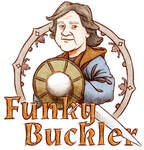|
Today we will continue the series comparing the sword and buckler systems of I.33 and Andre Lignitzer. Today’s post will be discussing the second play from Lignitzer and comparing it to the twenty-second cross of I.33. As a reminder, I.33 starts each of its 40 plays with a cross in the top left of the image. To compare Lignitzer’s system with I.33, a cross that is most similar to Lignitzer’s play will be selected. If the sixth play in I.33 is referenced, then it will be identified as cross 6. Why Cross 22 Was Selected For Comparison Cross 22 from I.33 was selected for this comparison because of the sequence of follow-on actions from the bind towards the end of the play. In truth, Lignitzer’s second play showcases many of the fundamental differences between the two sword and buckler systems. While Cross 4 of I.33 arguably has a bind position similar to the second play of Lignitzer, the follow-on actions were too different to draw many comparisons. Cross 22 is one of the plays in I.33 that shows the actions of longpoint verses longpoint. According to I.33, all actions with the sword end in longpoint so these crosses can be helpful when discussing sword and buckler systems that attack into the engagement as opposed to I.33 that generally places the sword into the engagement. Comparing Lignitzer Play 2 to I.33 Cross 22
The SimilaritiesWhile not explicitly stated in the second play, it can be assumed that the underhaw strike delivered to initiate this sequence would be delivered with the sword and buckler together as advised in the first play. This is similar to the sieges I.33 delivers. Another similarity is that both systems encourage attacking the opponent’s head from the bind. The DifferencesThere are a number of differences showcased in this Lignitzer play that run contrary to the teachings of I.33. The first and most glaring difference is that Lignitzer advises the fencer to separate the sword and buckler while in the bind. I.33 chooses to only separate the sword and buckler when it is safe to do so. In Lignitzer’s case, the separation appears to be done in order to maximize the area defended by allowing the sword and the buckler to independently engage in the bind. Another difference is the use of ochs in the bind where the hilt of the sword is brought closer to the ear while the tip of the blade remains forward towards the opponent. In general, I.33 avoids this position because of the gap it creates between the sword and the buckler. Analysis of the Defense against the Cut Towards the Head from the BindFinally, and arguably most interestingly, the second play of Lignitzer concludes with the opponent defending with just buckler while cross 22 ends with an action to maintain the bind with the swords. According to Lignitzer, “If he defends against this and lifts his shield up, take the left leg”. However, Lignitzer does not advise what to do if the opponent defends with the sword. Presumably, binding actions would occur and the first play of Lignitzer would be repeated. The second play of Lignitzer may add context to the “why of I.33 techniques”. I.33 never advises to defend with just the buckler. Presumably this is because defending with just the buckler would be common knowledge and not the primary focus of the techniques shown in I.33. However, the use of the upper schutzen to defend the head as opposed to just the buckler is an explicit technique in I.33. When looking at both of the systems, it is possible that the reason I.33 prefers to maintain the bind and use the sword to defend high is because if only the buckler were used, the opponent could attack the leg as shown by Lignitzer. Closing ThoughtsThe differences between systems does not inherently mean one is superior to the other. Just because I.33 chooses to keep the sword and buckler together when binding against the opponent does not mean that Lignitzer is wrong when separating the sword and buckler hands while in the bind. Both systems have their merits and their own rationale that support their techniques.
From a HEMA perspective, learning from both systems can increase the total amount of techniques a fencer has at their disposal. I.33 does not include leg strikes; Lignitzer does. Lignitzer attacks into the engagement to force the bind; I.33 places the sword into sieges. Both systems bring their own style that when used properly, can increase the potency of one’s own sword and buckler style. It is important to recognize the similarities and the differences between each system, especially systems like I.33 and Lignitzer which use similar weapon sets. By analyzing both, we can begin to see a potential pattern of what skilled sword and buckler fencers of the high medieval period felt were universal truths with this weapon combination. Next post in the series: Comparing I.33 and Lignitzer: Play III
0 Comments
Leave a Reply. |
Proudly powered by Weebly


